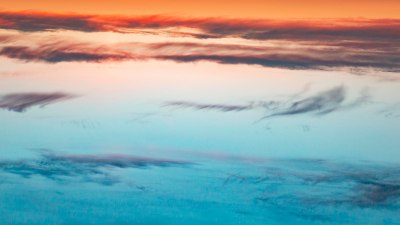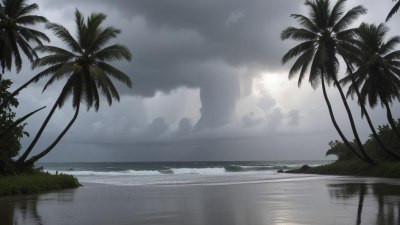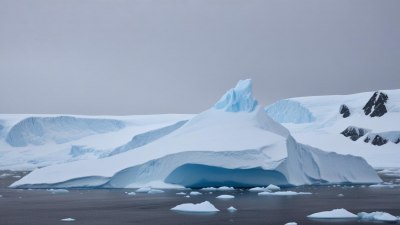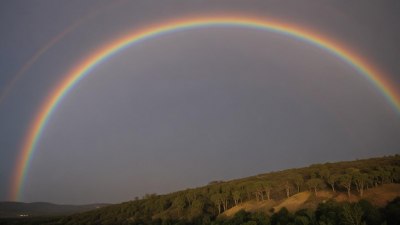How Waves in the Atmosphere Create Rippled Skies
Explore the fascinating phenomenon of atmospheric waves and how they create stunning rippled skies.

Have you ever looked up at the sky and noticed a beautiful pattern of ripples and waves? This stunning visual effect is not just a figment of your imagination; it is the result of complex atmospheric phenomena keenly observed by meteorologists and enthusiasts alike. Understanding how waves in the atmosphere create these rippled skies provides insight into the intricate processes occurring in our atmosphere.
What Causes Atmospheric Waves?
Atmospheric waves are largely a result of the wind patterns interacting with various environmental factors such as temperature, humidity, and terrain. These waves can be broadly classified into different types, including gravity waves, sound waves, and even Rossby waves. Gravity waves, for instance, occur when a parcel of air is displaced vertically and then attempts to return to its original position. The oscillation of the air creates ripples that can be seen as wave patterns in the clouds. Sound waves, though less noticeable in the sky, also contribute to the overall dynamics of the atmosphere, while Rossby waves influence weather patterns over larger scales.
The Role of Temperature and Humidity
Temperature and humidity are critical components in the formation of atmospheric waves. Warm air rises, while cooler air sinks, creating a dynamic environment where pockets of air can form waves. When warm, moist air meets cooler, drier air, this creates instability that leads to the generation of waves. The interaction between these air masses can cause the formation of lenticular clouds, which are commonly mistaken for UFOs but are, in fact, a visual testament to these atmospheric processes.
Rippled Skies and Lenticular Clouds
Lenticular clouds are a perfect example of rippled skies. These clouds often appear as lens-shaped formations hovering over mountains or hills, and they are the result of moist air flowing over the terrain. As the air rises over the peak, it cools and condenses, forming these distinct cloud shapes. The ripples seen in lenticular clouds are a direct reflection of the waves formed in the atmosphere. Their striking appearance has made them a favorite subject for photographers and nature enthusiasts.
The Influence of Wind Patterns
Waves in the atmosphere are heavily influenced by wind patterns. The wind flowing over the landscape can create turbulence that leads to the formation of these wave patterns. When the wind hits obstacles such as mountains, it creates a series of ripples in the atmosphere. These waves can propagate for miles, creating a stunning display of clouds that appear to undulate across the sky. The direction and speed of the wind are critical factors in how these waves develop and where they are observed.
How Human Activities Affect Atmospheric Waves
Human activities have also impacted the way atmospheric waves behave. Urban development, industrial emissions, and agricultural practices can change local temperatures and humidity levels, creating new conditions that influence wave formation. For example, urban heat islands can alter local air circulation patterns, affecting the formation of clouds and ripples in the sky. Understanding these changes is essential for climate scientists who are monitoring the impact of human activities on atmospheric phenomena.
Case Studies of Rippled Skies
Throughout history, there have been numerous documented instances of stunning rippled skies that have captivated both scientists and the public. For instance, a notable case occurred in 2016 when a series of lenticular clouds appeared over the San Francisco Bay Area, creating a breathtaking visual display. Another remarkable event took place over the Swiss Alps, where the combination of wind, temperature differences, and humidity created a spectacular array of rippled clouds that drew skywatchers from miles around. These events serve as a reminder of the dynamic nature of our atmosphere and the beauty that can emerge from its complexities.
The Connection to Climate Change
As climate change continues to impact our planet, the behavior of atmospheric waves may also change, leading to alterations in weather patterns and cloud formations. Warmer temperatures can change the stability of the atmosphere, potentially leading to a change in the frequency and intensity of these waves. Understanding the relationship between climate change and atmospheric waves is crucial for predicting future weather events, as well as comprehending the implications for ecosystems and human activities.
The Beauty of Atmospheric Waves
Waves in the atmosphere create stunning rippled skies that inspire awe and wonder. By understanding the science behind these phenomena, we can appreciate the intricate processes that shape our environment. From the formation of lenticular clouds to the influence of wind patterns and climate change, the beauty of the atmosphere is a testament to the complex interplay of natural forces. The next time you look up and see rippled skies, take a moment to reflect on the scientific marvel that is unfolding above us.











